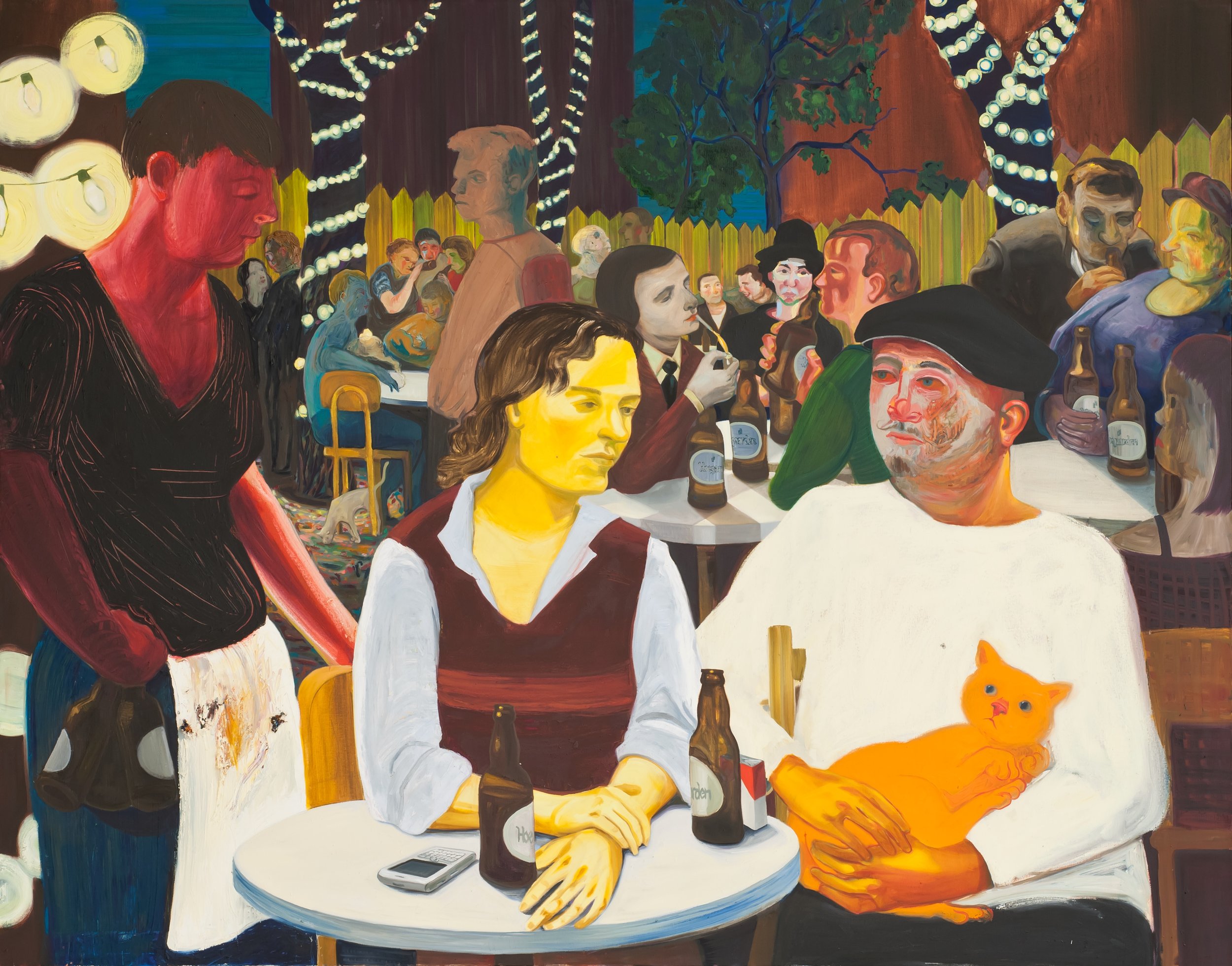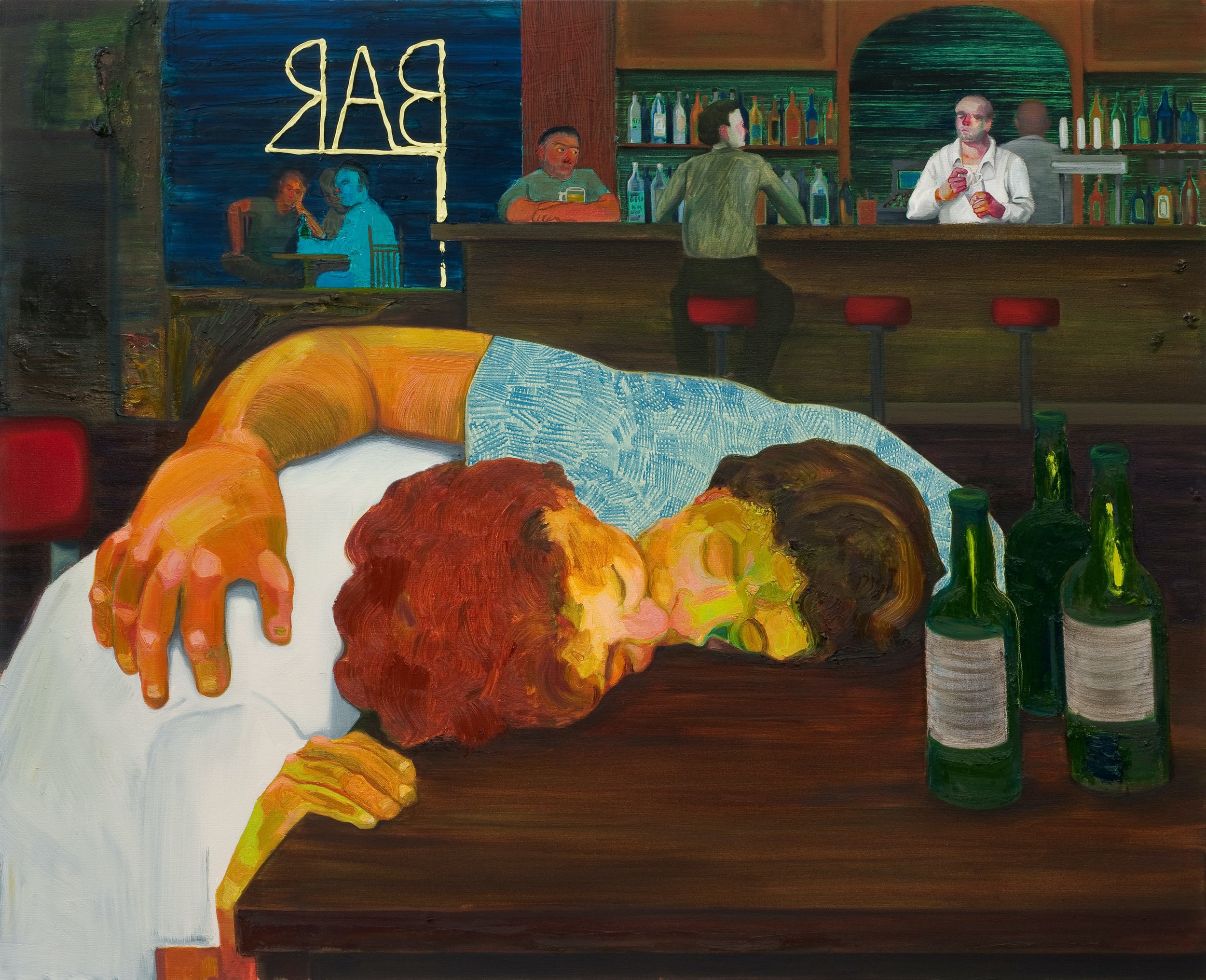Nicole Eisenman: What Happened, at Whitechapel Gallery
Both the late artist Pablo Picasso and late fashion designer Alexander McQueen both declared words to the effect of ‘you’ve got to learn the rules [of your medium] in order to break with them’. This kind of insight, derived from their intelligence, combined with other attributes such as fervour, courage and proliferation are why those men will forever be immortalised as geniuses. Painting has suffered greatly since the death of Francis Bacon; the last, widely-accepted true genius of the medium, but Nicole Eisenman seems to have discovered and picked out from a patch of neglected grass, that proverbial baton. Moving through the current exhibition at Whitechapel Gallery, Eisenman’s pure mastery of her craft is patently evident.
The artist’s adeptness at portraiture…is most remarkable.
There are many things to be said about Nicole Eisenman: What Happened. If you arrive at the exhibition new to her work, then you will delight in finding the inherent Kafka-like humour and absurdity to her scenes, the numerous qualities that make her a terrific painter including her careful management of colour and finally, in the penultimate rooms, the reason why her composite style lends itself so naturally to the medium of sculpture. Amongst all these however, it is possibly, simply, the artist’s adeptness at portraiture, as honed by a fascination with cartoons, that is most remarkable.
This is a large retrospective show with each room attempting to thematise or split up the artist’s career into different phases. What soon becomes apparent is that, much like how a cartoonist will ape reality, Eisenman seems to be somewhat obsessed with referencing the style of other artists, rendering not just the oeuvre of the show incoherent, but individual paintings. The eclecticism means that you’ll find, amongst the artist’s compositions, an assortment of motifs ranging from Philip Guston hands - limp and holding a cigarette; a Klimt kiss in which two faces merge; Peter Howson orgy-like crowds and the barren ombré deserts with which Salvador Dali is associated. You would be mistaken for thinking (perhaps in relation to GCSE students) that this is a mark of naivety. On the contrary, Eisenman will brilliantly utilise whatever application of paint she sees fit in best representing the mood or action taking place at respective spots of her tableaus.
Eisenman is masterful in capturing facial expression…
Eisenman is masterful in capturing facial expression, enhanced by the deftness with which the artist switches from one style and hue to another. A lot of her characters look gormless, particularly ones engaged with technological devices such as a smartphone (Selfie, 2014) and a drone. In one of the large paintings (The Darkward Trail, 2018) a line of itinerant ants, marked so minutely that they could easily go amiss, seem to epitomise Eisenman’s observations on contemporary society. The gloomy suggestion that the world’s population is passive yet knowing of a ride towards existential uncertainty is yet again exaggerated by intelligent decision making, in this case, by setting the characters in square profile and against a featureless land. Forgetting the humorous and technical qualities of Eisenman’s body of work, there’s a chance of being affected by the general forlorn tone of her paintings. These sentiments, however, would be to ignore the very activity in which one is engaged.
Nicole Eisenman: What Happened is a must-see, on at Whitechapel Gallery until 14 January 2024.
For more information and booking, please visit the Whitechapel Gallery website.




